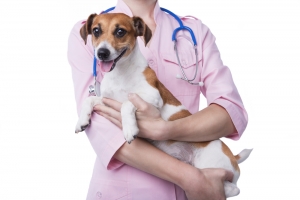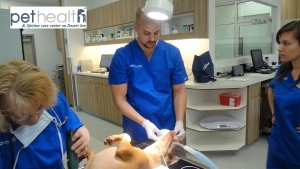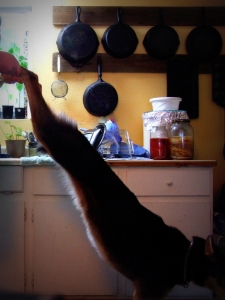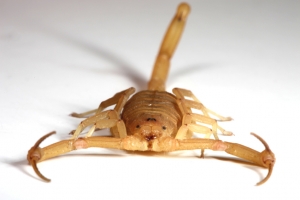Make Sure Your Pets Are Safe If Something Happens With You
Many people do not think about how much their pets rely on them every day. If you think about it, they are completely reliant upon you to provide them with food, water, shelter and all of the aspects of life that happen on a daily basis. While this is never a concern for most pet parents who take great joy in caring for their animals, even the best and most concerned pet parent will many times forget to take precautions in case anything was to happen to them. Most people do not think about what would happen if they were injured or died, and even though you take great care to spell out instructions about family members in those cases, people forget about their pets.
If you were injured in an accident and were unconscious in the hospital, is there someone who would be notified that you have pets in your home that need food and water? This simple thought eludes many people, as they assume the police would take the time to figure it out. This is not the case, and if you live alone and do not have any close relatives who would know that you have pets, it could be days or weeks that your animal has no food or water before anyone figured it out. If you are hospitalized, the procedures are to figure out your best care, and there is nobody in place who has the job of coming to your home to find out if you have pets that need care. In cases where people cannot communicate or are unconscious, there is no way of conveying this information to someone. This is why it is always suggested to keep a card or note in your wallet or purse along with your identification and insurance information that states how many pets you have and where they are located. It is also a good idea to inform neighbors that you would be putting them onto the information card as a contact who can be called to care for the pets in the house, as neighbors are not on a contact list for people who are injured, and hospital staff can usually not be bothered to leave their duties to travel to your home. Specify a neighbor’s contact information and give them permission to be contacted and enter your home to care for your pets if you cannot.
In the unfortunate circumstance of you dying, who will care for your pets? Shelters are filled with animals whose owners have passed away and the next of kin does not want to care for the pet. It is always a good idea to specify in a will or other document where your pet is to go in the circumstance of your death. Contact your friends and relatives to ask them if they would be comfortable caring for your pet if you were to die, and if they are not then contact someone else. Precautions must be taken because there are no services in place to track down those who would want your pets if you do not specify. If you were to die without making arrangements, your pets will end up at the local shelter.
Some simple precautions on the parts of pet parents can make your pet’s lives more bearable if something was to happen to you, just like the case with human beings. Take a few minutes and create a contact card for your wallet or purse, and make a few phone calls to see if your friends or neighbors would take your pets if something happens to you. You can be a good pet parent even if you are not able to be with them directly, it only takes a few minutes.

 Anyone who has lived in Las Vegas for more than a year realizes that the weather changes pretty dramatically and pretty quickly here, and with the first day of fall now officially over, we can expect the change to colder temperatures to be happening over the next few weeks. While this break from the heat of the Las Vegas summers is welcome for most residents, we must take into consideration how this change of weather affects our pets, and what we must do to keep them safe and healthy. In Las Vegas, it is never suggested to keep your pets outside for extended periods of time during any part of the year, but what we will observe many times is pet owners feeling that it is safe to keep their pets outside of the safety of their home for longer periods of time as the weather cools off. While the imminent threat of heat may not be as obvious as it once was a few months ago, it is important to remember that your pets are still exposed to the elements during the cooler months as well, and while we do not have much for snow in Las Vegas, we do get freezing temperatures that can be quite detrimental to your pet’s health.
Anyone who has lived in Las Vegas for more than a year realizes that the weather changes pretty dramatically and pretty quickly here, and with the first day of fall now officially over, we can expect the change to colder temperatures to be happening over the next few weeks. While this break from the heat of the Las Vegas summers is welcome for most residents, we must take into consideration how this change of weather affects our pets, and what we must do to keep them safe and healthy. In Las Vegas, it is never suggested to keep your pets outside for extended periods of time during any part of the year, but what we will observe many times is pet owners feeling that it is safe to keep their pets outside of the safety of their home for longer periods of time as the weather cools off. While the imminent threat of heat may not be as obvious as it once was a few months ago, it is important to remember that your pets are still exposed to the elements during the cooler months as well, and while we do not have much for snow in Las Vegas, we do get freezing temperatures that can be quite detrimental to your pet’s health. When a veterinarian examines your pet for a routine checkup, they are looking at your animal’s vital signs, possibly taking blood samples for testing against known potential health risks, looking for signs of disease or infection, and generally taking into account any changes that can be noticed since the last time they were seen. Weight loss and attitude changes in the pet are some of the telltale signs that something might be wrong, and at the visit, the veterinarian is looking for signals that there may be something wrong that can be treated. Many times, the pet itself will not give any physical signs of illness, and not yelp, or cry during their daily activities. This is due to the fact that animals will hide their illnesses or injuries through instinct, as in the wild an animal that is sick or injured is easy prey for predators. Your pet is a patient that is not willing to give many signs of illness, so it is the job of the veterinarian to use the knowledge of physical signals to diagnose illnesses or injuries even if you or I would not see them.
When a veterinarian examines your pet for a routine checkup, they are looking at your animal’s vital signs, possibly taking blood samples for testing against known potential health risks, looking for signs of disease or infection, and generally taking into account any changes that can be noticed since the last time they were seen. Weight loss and attitude changes in the pet are some of the telltale signs that something might be wrong, and at the visit, the veterinarian is looking for signals that there may be something wrong that can be treated. Many times, the pet itself will not give any physical signs of illness, and not yelp, or cry during their daily activities. This is due to the fact that animals will hide their illnesses or injuries through instinct, as in the wild an animal that is sick or injured is easy prey for predators. Your pet is a patient that is not willing to give many signs of illness, so it is the job of the veterinarian to use the knowledge of physical signals to diagnose illnesses or injuries even if you or I would not see them.
 All dog owners who frequent areas where there are other dogs present will observe a dog fight or have their dog in a fight sooner or later. Even the most passive dogs will be attacked from time to time by other dogs, either while they are being walked or while they are loose in a dog park or another area. Additionally, your dog coming into contact with other dogs that are not leashed, are running loose, or are not friendly can pose serious threats to your dog, who might be completely innocent of instigating a fight but finds themselves being attacked and is attempting to defend themselves. No matter what the reason, a dogfight is a very traumatic and scary situation for human beings, as the chaos of the situation or the horrible vision of seeing your pet fighting will generally be very upsetting. In addition to the emotional trauma of seeing your pet in a fight, dogs that are engaged are in defense or attack mode, and will usually not be able to differentiate between their owners and the attacker. This means that when you try to break up a dogfight you may be bitten by the other dog, or potentially even be bitten by your own dog.
All dog owners who frequent areas where there are other dogs present will observe a dog fight or have their dog in a fight sooner or later. Even the most passive dogs will be attacked from time to time by other dogs, either while they are being walked or while they are loose in a dog park or another area. Additionally, your dog coming into contact with other dogs that are not leashed, are running loose, or are not friendly can pose serious threats to your dog, who might be completely innocent of instigating a fight but finds themselves being attacked and is attempting to defend themselves. No matter what the reason, a dogfight is a very traumatic and scary situation for human beings, as the chaos of the situation or the horrible vision of seeing your pet fighting will generally be very upsetting. In addition to the emotional trauma of seeing your pet in a fight, dogs that are engaged are in defense or attack mode, and will usually not be able to differentiate between their owners and the attacker. This means that when you try to break up a dogfight you may be bitten by the other dog, or potentially even be bitten by your own dog. Living in Las Vegas, we have a great number of insects that are only found in desert climates, and unfortunately, many of these insects have bites and stings that can be quite painful, if not deadly to pets and humans alike. Without going into a list of insects that are common to the Las Vegas valley that will frequently sting or bite pets who interrupt them, we will discuss a few of the most common. As an expansion to areas of Las Vegas that have remained as an un-inhabited desert for many years happens, we find many insect populations coming into close contact with us every day, even though many people can claim to have never even seen one of these types of insects previous to moving to a specific area of Las Vegas. We will be discussing scorpion stings, and what to do if your pet is stung by a scorpion.
Living in Las Vegas, we have a great number of insects that are only found in desert climates, and unfortunately, many of these insects have bites and stings that can be quite painful, if not deadly to pets and humans alike. Without going into a list of insects that are common to the Las Vegas valley that will frequently sting or bite pets who interrupt them, we will discuss a few of the most common. As an expansion to areas of Las Vegas that have remained as an un-inhabited desert for many years happens, we find many insect populations coming into close contact with us every day, even though many people can claim to have never even seen one of these types of insects previous to moving to a specific area of Las Vegas. We will be discussing scorpion stings, and what to do if your pet is stung by a scorpion.